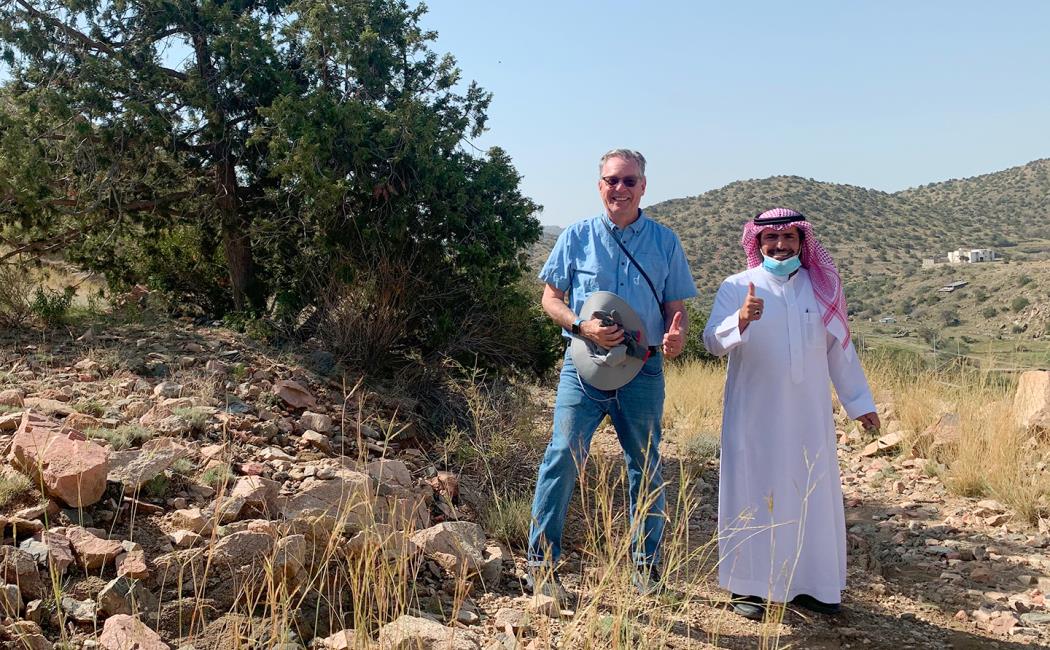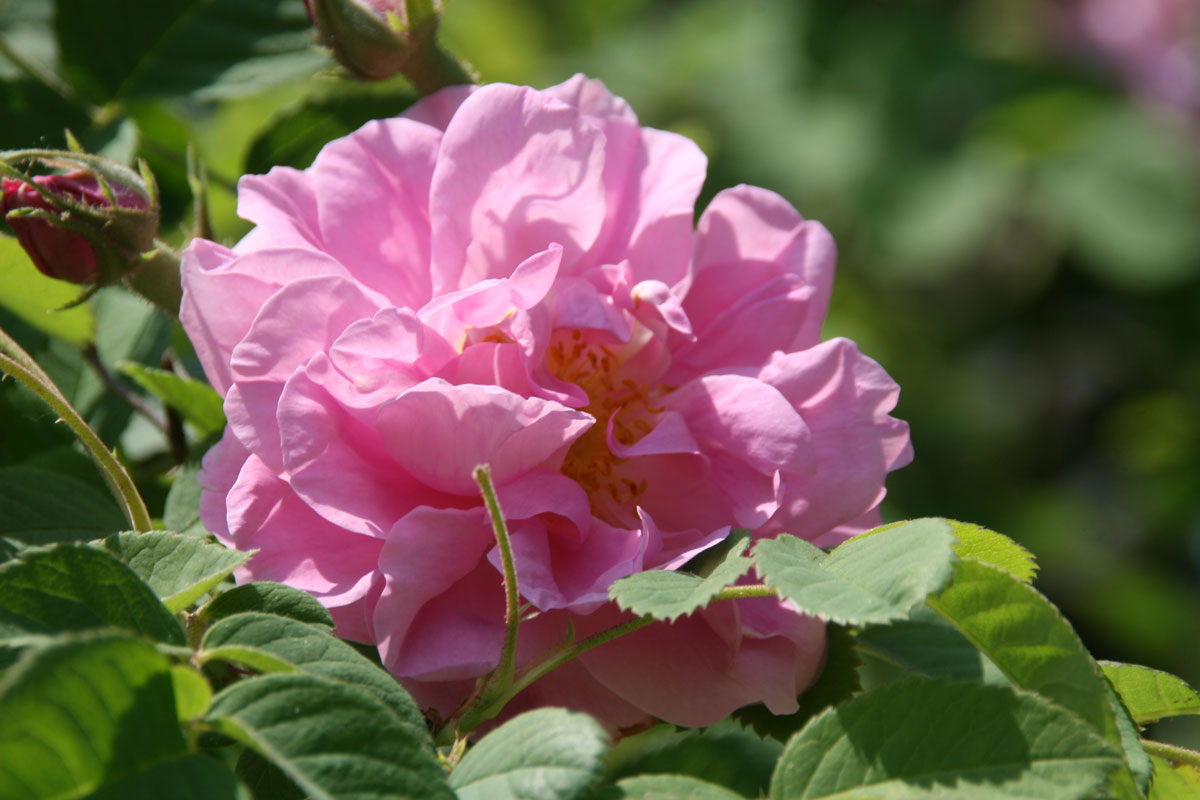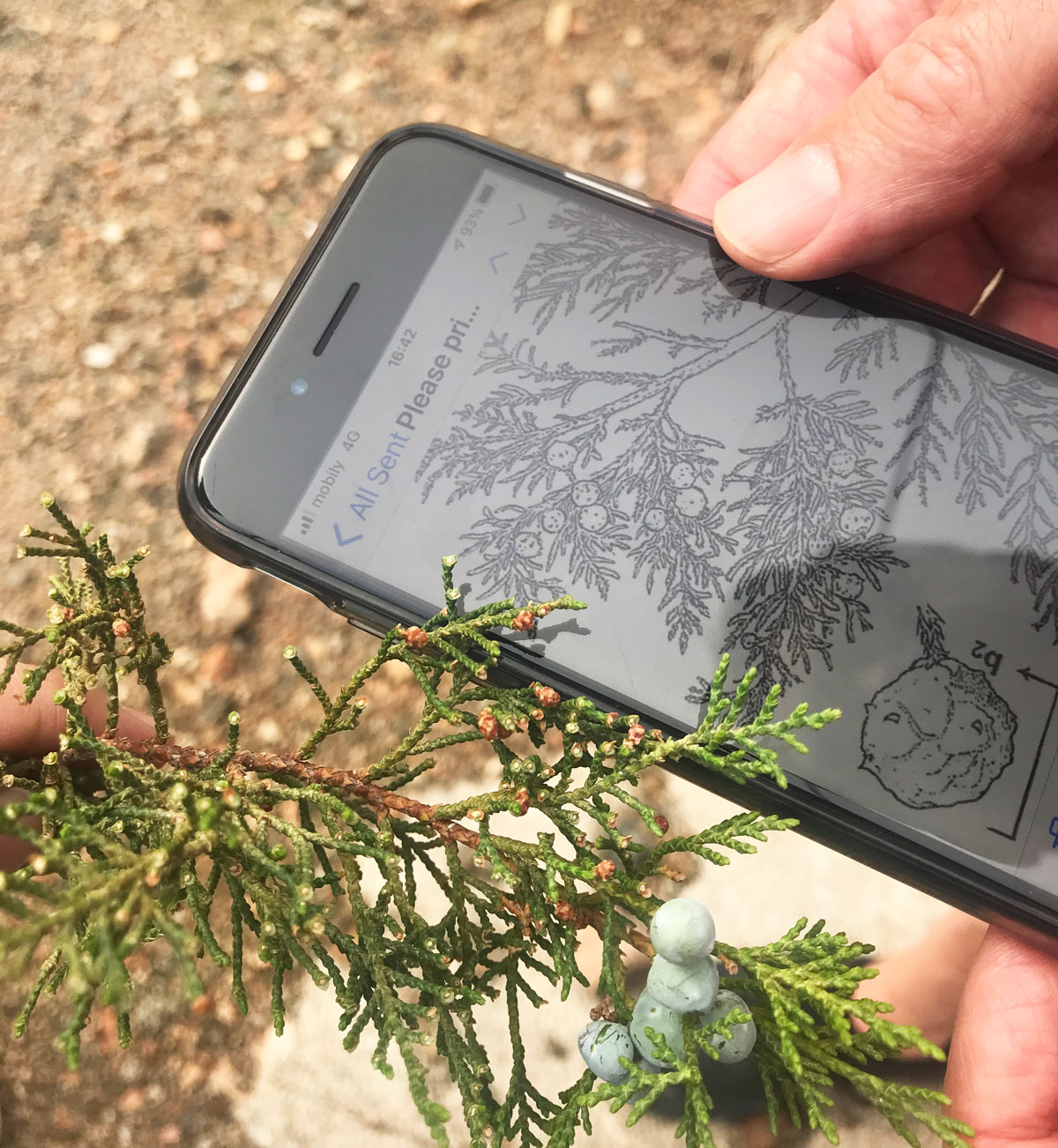KAUST CDA and MEWA Kickoff Saudi Native Genome Project

KAUST CDA and MEWA Kick off Saudi Native Genome Project
17 June, 2021
Cover Image: Professor Rod Wing and Dr. Ahmed Alghamdi collect samples at the Juniper Forest in Taif
Source: Yong Zhou
The inaugural field work expedition for the Saudi Native Genome Project kicked off last week.
Led by CDA Director and Professor of Plant Science Rod Wing, in cooperation with MEWA’s National Center for the Development of Vegetation Cover & Combating Desertification (NCVC), the project aims to study many common and endangered plant species of cultural, religious, medicinal, and pastoral significance in Saudi Arabia. Saudi Vision 2030 supports agricultural development to achieve water and food security alongside ecological balance. This research will contribute significantly to achieving it.
“We are aiming to better understand desert ecosystems from a genomic and population genetics perspective,” says Professor Wing. “Such information will help inform new strategies to combat desertification, to protect our environment, and to monitor the gain and loss of genetic biodiversity.”
The pilot program will study a set of 15 terrestrial ecosystems, centered around 5 plant species, each falling into three categories – i.e. Threatened Species, Dominant Rangeland Species, and Dominant Forest Species. For this initial trip to Taif and Al-Lith, Professor Wing’s team identified “Voucher” specimens (parts of/wholly preserved plants collected and worked on during the course of a study), and collected samples from 6 of these species to be further studied.

The team collected samples of the Taif rose, renowned for its intense perfume.
Source: David Stang under the Creative Commons
Attribution-Share Alike 4.0 International license
Notably, they observed Taif's famous, oil-rich, 30-petal damask rose, Rosa Damascena, whose perfume is distilled into some of the world’s most expensive rose oil and rose water. They also sampled from the coniferous tree Juniperus procera,
which has tragically exhibited a widespread decline with extensive tree dieback and die-off in recent years.

Professor Wing confirms the identification of Juniperus procera before collection
Source: Nahed Mohammed
According Nahed A. Mohammed, a postdoc in Professor Wing’s lab, “Providing a high-quality reference genome for Juniperus procera, and investigating its ecosystems with respect to metabolomes, root development/architecture, and microbiomes, would provide essential data as to how and why a particular ecosystem operates in a particular environment -- thus helping us to understand why the species is experiencing dieback.”
NCVC collaborators have been trained to collect and preserve the samples as herbarium specimens, phenotype them extensively, and tag them with Radio-frequency identification (RFID). Professor Wing’s lab is highly specialized in DNA-extraction for
genome sequencing using various methods. The high-quality genomic resources and annotations generated by his group will be invaluable for expediting research and advancing scientific discovery in the field of plant science.
The Native Genome Project will establish a robust pipeline and collaborative network to interrogate hundreds of diverse terrestrial and aquatic ecosystems -- information which can used to understand how ecosystems thrive in extreme environments. It will also train a new cohort of Saudi scientists to apply ecosystem biology to environmental protection and conservation. Such knowledge and expertise can be applied to the engineering of large-scale ecosystems that promote much needed vegetation cover, combat desertification, and promote sustainable agricultural practices throughout the Kingdom of Saudi Arabia.
As Dr. Khaled Al-Abdulkader, CEO of the NCVC, explains,
“The Native Genome Project contributes to the establishment of a genetic information bank that helps us better understand the survival of these plants, their adaptation to diverse environments, and the extent to which they are affected by various pressures. This knowledge will aid us in preservation from extinction, re-propagation, and cultivation in each species’ original habitat.”
Figure 1.
Voucher species identified for collection.
Threatened Species | |
| Mimusops laurifolia | Labakh لبخ |
| Breonadia salicina | Sawmal صومل |
| Celtis africana | Shabareq شبارق |
| Ficus vasta | Ruggaa رُ†ق†ع |
| Tamarindus indica | Tamr hindi تمر†هندي/ حُمر |
Dominant Rangeland Species | |
| Juniperus procera | Ara’ar عرعر |
| Ziziphus Spina-christi | Seder سدر |
| Haloxylon persicum | Ghada غضا |
| Salvadora persica | Araak آراك |
| Moringa peregrina | Baan بان |
| Rosa Damascena Mill | Taif Rose |
| Teucrium polium | Alja’ada |
| Delonix elata | Ranuf |
| Hyphaene thebaica | Doum palm |
Dominant Forest Species | |
| Calligonum comosum | Artaa أرطى |
| Leptadenia pyrotechnica | Markh مرخ |
| Salsola villosa | Rothah روثه |
| Rhanterium epapposum | Arfaj عرفج |
| Haloxyon salicornicum | Remth رمث |